As MTR has reported extensively, Black Horse Pike (US-322/40) in Atlantic County, continues to be one of the most dangerous roads in the state of New Jersey. With little in the way of pedestrian infrastructure, fast moving automobile traffic and retail sites that lining the roadway, Black Horse Pike, is precisely the type of suburban “arterial” road that tends to be particularly dangerous for non-drivers. Year after year, pedestrians are killed in alarming numbers while walking along or attempting to cross this roadway. In fact, due to the extremely high number of pedestrian fatalities, NJDOT Commissioner James Simpson has pledged to personally inspect Black Horse Pike in the coming days.
There is a significant residential population within walking distance of Black Horse Pike (particularly in Pleasantville and Egg Harbor Township). Ideally, these residents would be able to safely access area businesses and local bus stops on foot, but the pike’s current design presents them with a number of major obstacles. Wanting to better understand the conditions that these and other pedestrians face, I visited Black Horse Pike in Atlantic City, Pleasantville and Egg Harbor Township and documented what I discovered. The following photographs illustrate the hazards, inconveniences and the, quite frankly, shocking conditions that I encountered while walking the Black Horse Pike.
Atlantic City
Black Horse Pike (known briefly here as Albany Avenue) begins its westward crawl across the Garden State in Atlantic City. I began my journey on a fairly wide sidewalk about a mile from the boardwalk and casinos–almost instantly, the paved sidewalk ended.
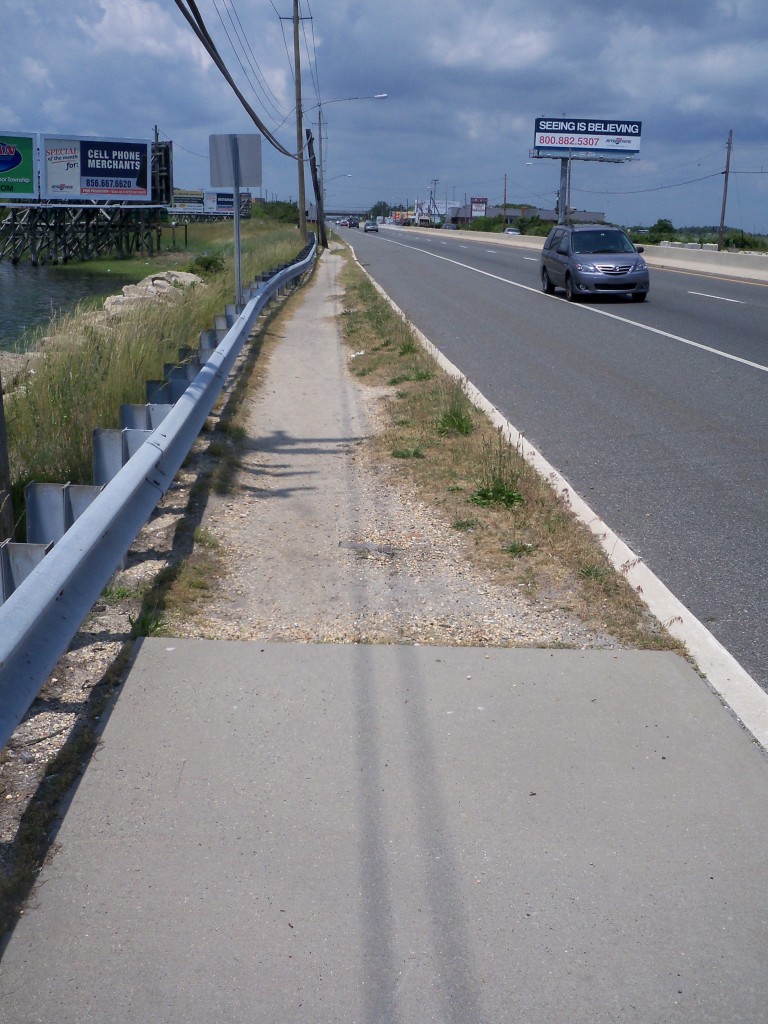
Continuing my westward trek, I encountered a crosswalk that was clearly added to the pike to make it safer for pedestrians to cross between local businesses on either side of the roadway. While this crossing is well-marked and has a pedestrian-activated walk signal, those who are unable to make it all the way across this wide stretch of road before the light turns red will be stuck in the middle of the roadway, with little clearance from passing vehicles:
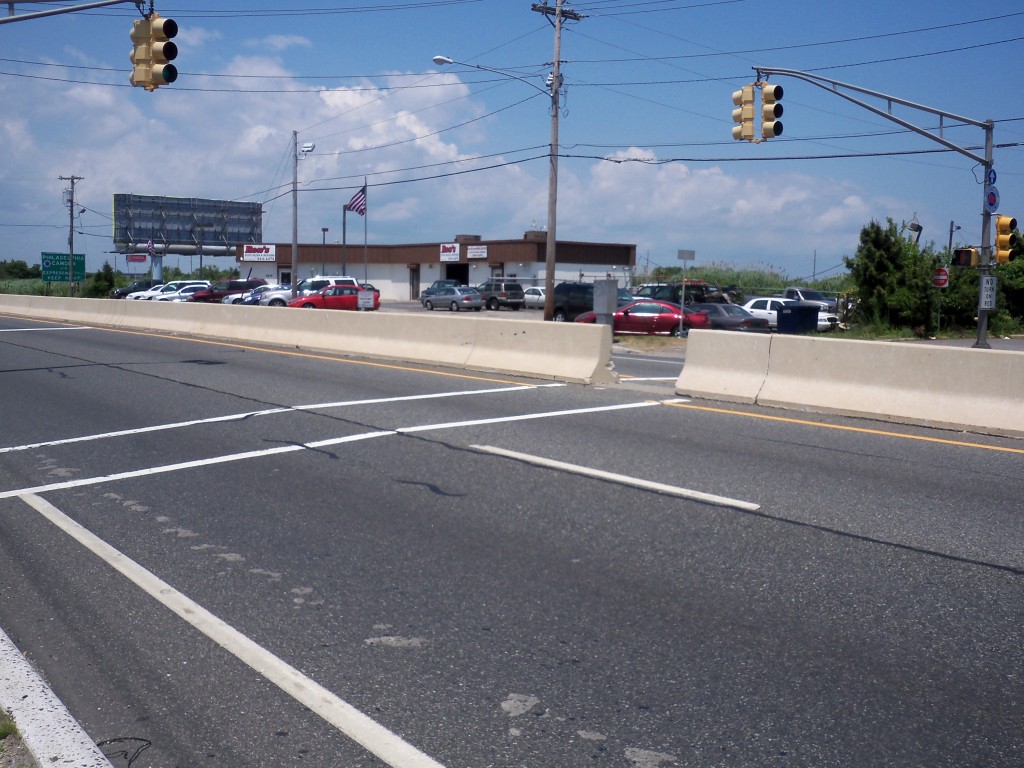
Pleasantville
West of Atlantic City is Pleasantville. Pedestrian infrastructure here is extremely lacking. While school children, seniors and those with physical disabilities are probably most at risk, the conditions here are so deplorable that, even with extreme caution, it felt unsafe for me to walk here.

Reaching the intersection of Black Horse Pike and Route 9, I was shocked to see that there were no crosswalks. I crossed here with trepidation.
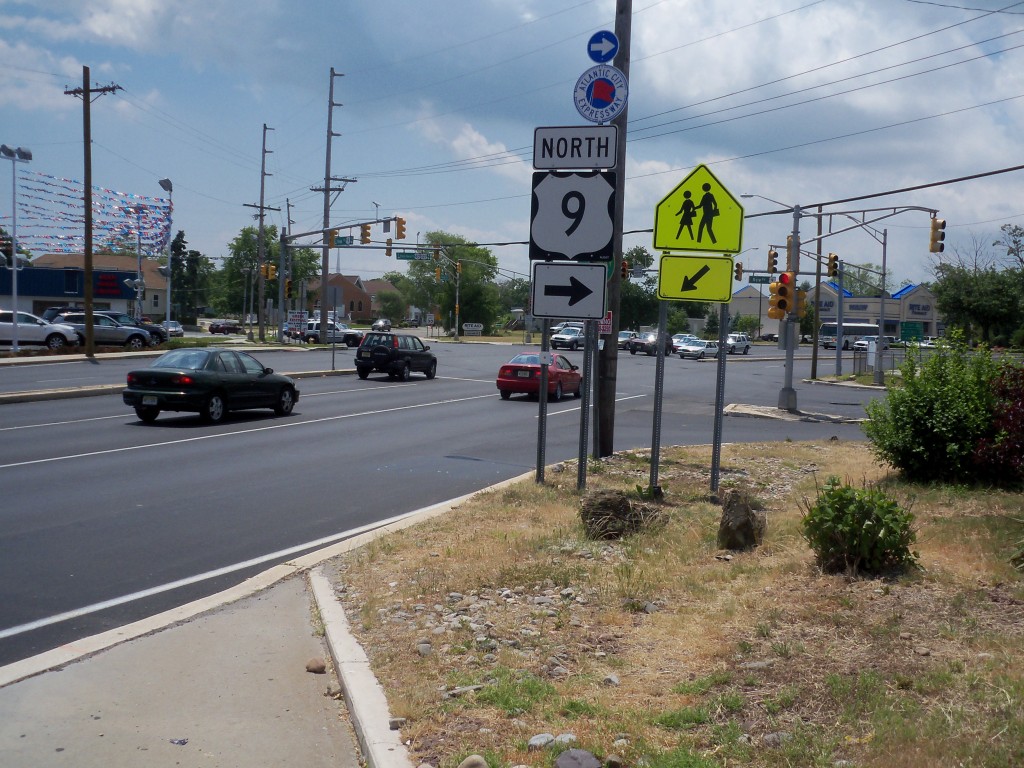
Yet again, a brief section of paved sidewalk ended in the grass.
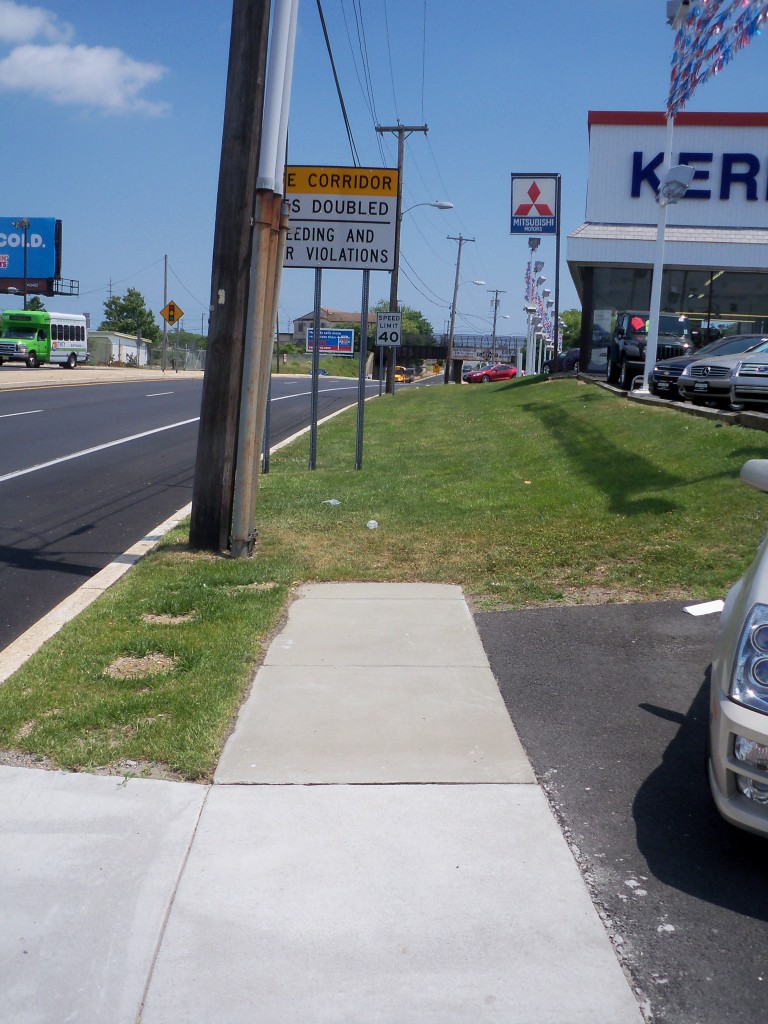
Even portions of the pike with sidewalks can be difficult and dangerous to walk on due to trash, debris and other obstructions.
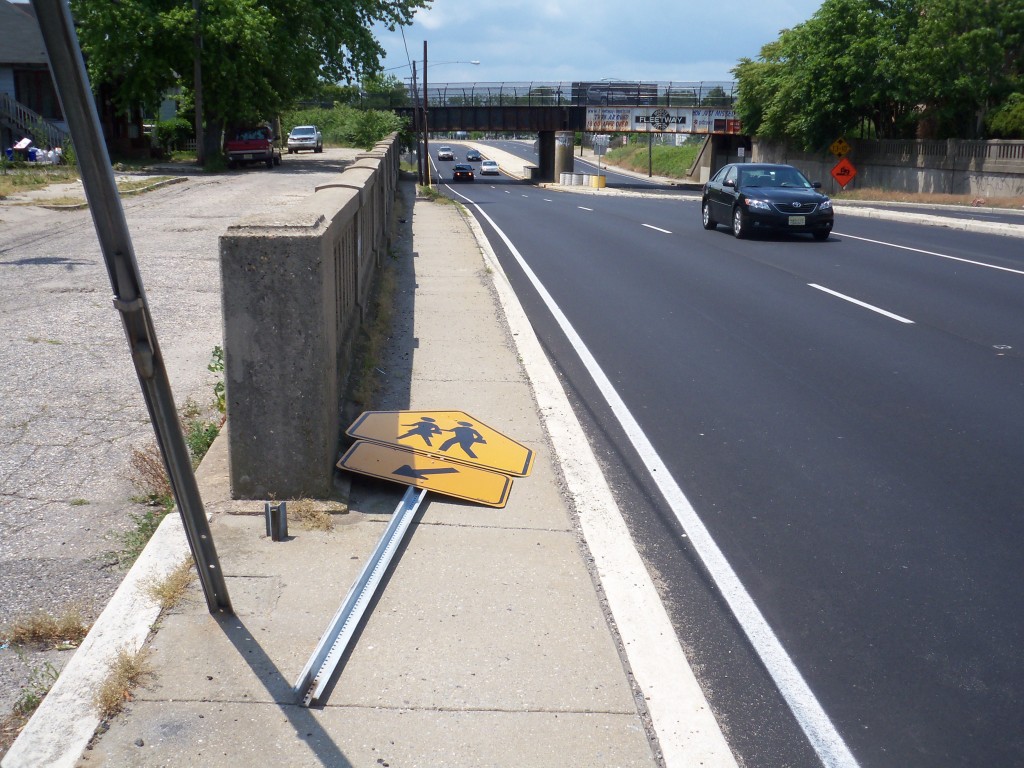
Egg Harbor Township
Conditions on Black Horse Pike in Egg Harbor Township were similar to those elsewhere, but there are an even greater number of roadside businesses that have entrances designed to be accessed only by automobile. The vast number and size of area curb-cuts put pedestrians in constant danger of being hit by turning cars and trucks. Adjacent lands are underutilized and businesses are difficult to reach on foot.
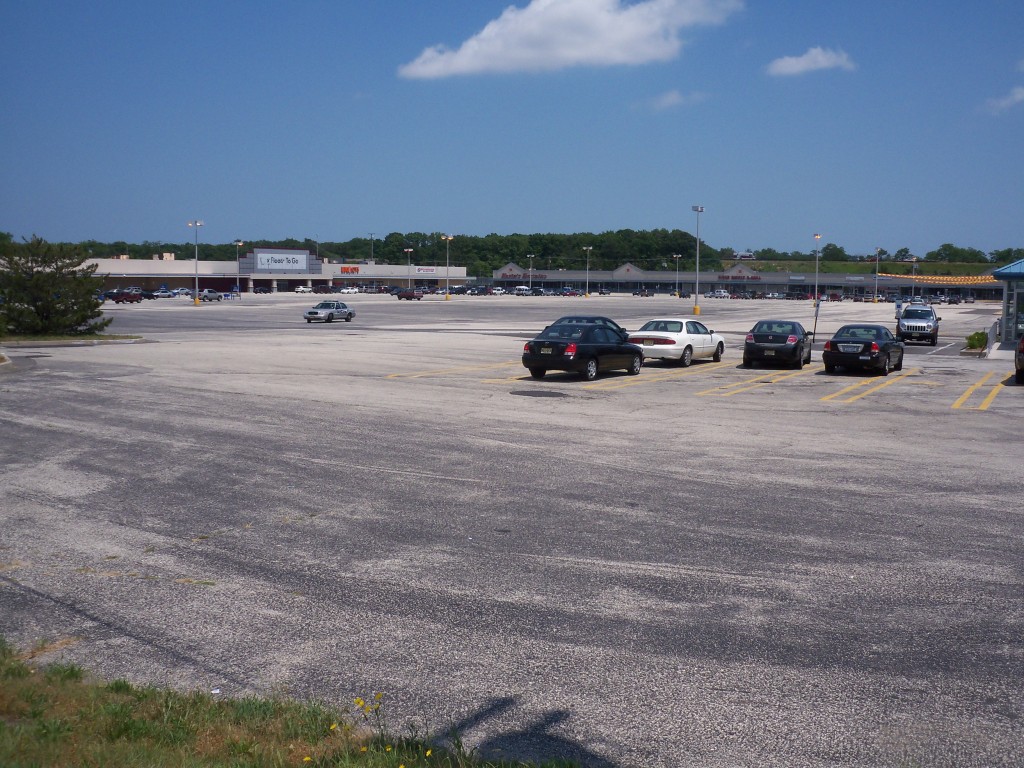
Some obstructions on the side of the road force pedestrians to step into the street to get around them.
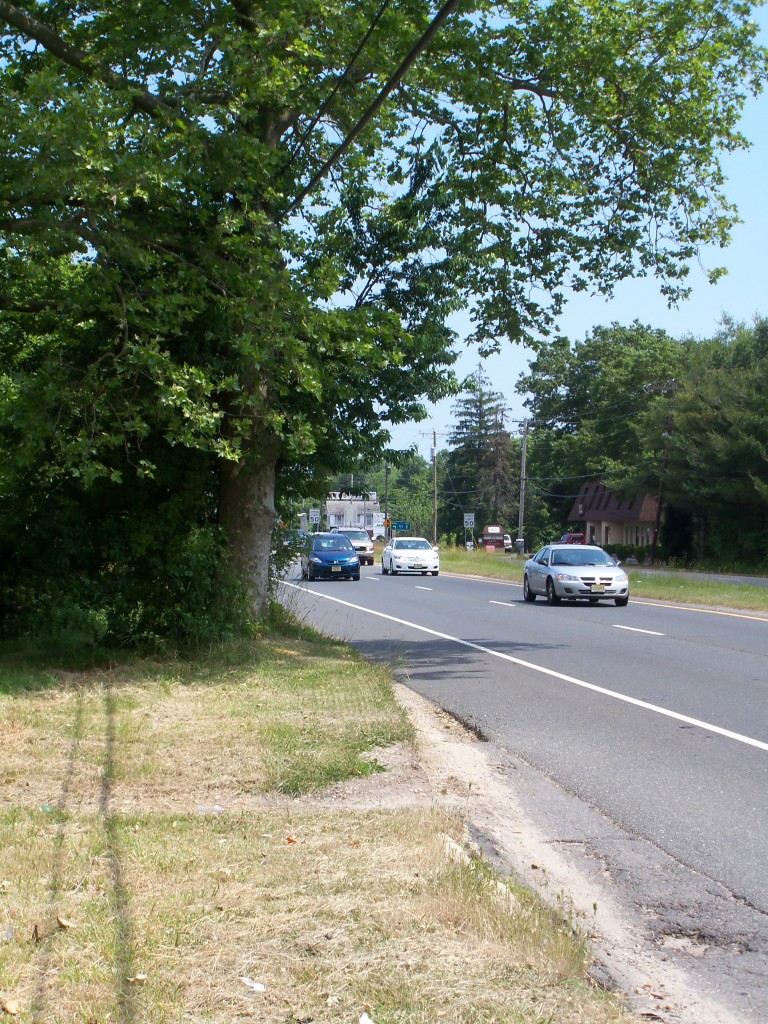
There are numerous bus stops along Black Horse Pike, but very few are placed beside paved sidewalks and even fewer have bus shelters to shield riders from the elements. Many seniors and those with limited mobility must negotiate uneven grass and gravel. New Jersey’s “Safe Routes to Transit” program provides funding to alleviate such conditions, but the 2012 Capital Plan would halve its funding.
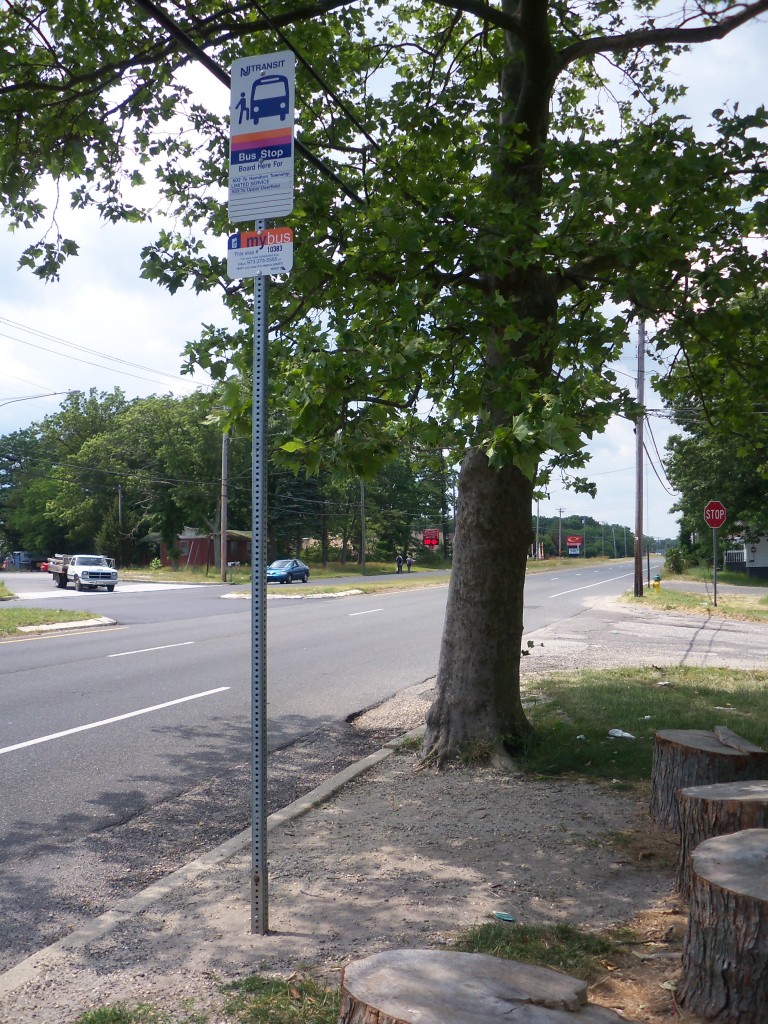
Ways to Fix the Pike
My journey along Black Horse Pike in eastern Atlantic County really put into perspective the conditions that pedestrians who walk along this road face on a daily basis while traveling to work, school or to visit the doctor’s office. Nearly all sections of the roadway that I visited were unsafe; all were inconvenient and unpleasant. The scale of the needed improvements along the corridor is large, but re-designing Black Horse Pike and surrounding areas in a way that is beneficial for area businesses, pedestrians and other road users will produce widespread benefits.
As first steps, street trees and improved roadway striping should be added in areas that currently lack them. Continuous sidewalks that are protected from traffic, additional crosswalks and other features such as bike lanes and pedestrian median islands will also need to be installed.
However, to truly transform the Black Horse Pike corridor, there must be a broader overhaul aimed at producing a safe, attractive and prosperous regional boulevard. In order to accomplish this, the state Department of Transportation, area municipalities, advocates, and local stakeholder groups need to come together to create a plan that benefits all road users, as well as future business owners and residents. If local governments agree to encourage the development of walkable, mixed-use projects along the road, Black Horse Pike will become more economically viable, and area residents will find it safer and more convenient to reach area businesses on foot.
Walking along Black Horse Pike, one sees how previous piecemeal planning, design and roadway engineering decisions have produced an environment that is hostile to pedestrians and is becoming more and more unattractive to business owners. However, it is possible to turn this disjointed and outdated roadway into a modern, thriving thoroughfare. By doing so, the quality of life for area residents will be vastly improved, and, most importantly, lives will be saved.
Photos: Matthew Norris/TSTC.

Nice report!
Somehow engineers feel its okay to constantly place telephone poles in the middle of sidewalks of inappropriate width. However if the obstruction were a majestic decades old tree that could easily be avoided with a curved sidewalk, the tree would be cut down in a moments notice because those same engineers would say that the tree poses collision hazard for pedestrians and cyclists!
(No joke! I’ve actually heard this logic used when it was suggested to bend a sidewalk around an old tree.)
Also, you should take a look at Rt 27 between New Brunswick and Princeton. This is a very active NJ Transit Bus corridor but there are literally few to no pedestrian amenities on this State highway, even around the numerous bus stops.
As long as the property owner has primary responsibility and liability for sidewalks, there will be the perverse incentive to not allow sidewalks where none now exist. Serious thought is needed to find a funding stream for sidewalks and relieve the property owners of the burden. If they aren’t responsible for the road why should thy be responsible for the sidewalk.
[…] MTR walked Atlantic County’s Black Horse Pike, in southern New Jersey, to explore and document the conditions that make this road particularly […]
[…] known pedestrian safety expert Dan Burden, and elected officials to draw attention to the deadly Black Horse Pike in southern New Jersey’s Atlantic County. AARP and the Campaign organized surveys of […]
[…] = {"data_track_clickback":true,"ui_language":"en"};Last summer, Mobilizing the Region documented the conditions that make the Black Horse Pike one of New Jersey’s most dangerous roads for […]
[…] known pedestrian safety expert Dan Burden, and elected officials to draw attention to the deadly Black Horse Pike in southern New Jersey’s Atlantic County. The group also worked to garner support from […]
[…] known pedestrian safety expert Dan Burden, and elected officials to draw attention to the deadly Black Horse Pike in southern New Jersey’s Atlantic County. The group also worked to garner support from […]
[…] known pedestrian safety expert Dan Burden, and elected officials to draw attention to the deadly Black Horse Pike in southern New Jersey’s Atlantic County. The group also worked to garner support from […]